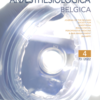A five-year retrospective cohort study of maternal, neonatal outcomes and anesthetic management in women with extreme obesity at an Australian hospital
Pregnancy, Obesity, Morbid, Pregnancy Outcome, Prenatal Care, Anesthesia
Published online: Jun 28 2019
Abstract
Background : Maternal obesity during pregnancy is associated with adverse perinatal outcomes. Data from Australia and New Zealand shows that women with extreme obesity have a high rate of general anesthesia for cesarean delivery (CD).
Objective : To assess the anesthesia, maternal and neonatal outcomes of women with extreme obesity delivering at the Royal Brisbane and Women’s Hospital (RBWH). These results were compared with published data for Australia and New Zealand.
Design and Setting: Five year retrospective single centre cohort study at the Royal Brisbane and Women’s Hospital (Australia), approved by institutional ethics committee.
Materials and Methods : Women were included if they had a booking weight > 140kg or BMI greater than 50 kg m-2 and delivered between January 2013 and December 2017. Data were obtained from the obstetric database and electronic medical records.
Results : We identified 127 women with a median (IQR) booking weight of 144 (140-156) kg and BMI of 51.9 (49.1-55.6) kg m-2. Of these, 88% had an antenatal anesthetic assessment. Seventy-nine (62.2%) delivered by CD and of these 40 (31.5%) were elective deliveries. Neuraxial anesthesia was the preferred technique for CD, used in 76 women (96.2%) with 7 (9.2%) of these neuraxial blocks converted to general anesthesia. Of the 78 women commending active labor, 47 (60.3%) used epidural analgesia. Sixty-five (50%) neonates were admitted to Special care Nursery/Neonatal Intensive Care Unit (SCN/NICU).
Conclusions : Our data shows a high rate of CD and use of labor epidural analgesia compared with the general population, but similar to population-based data for obese women from Australia and New Zealand. A high proportion of neonates required admission to SCN/ NICU.
